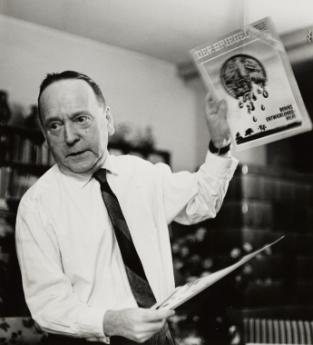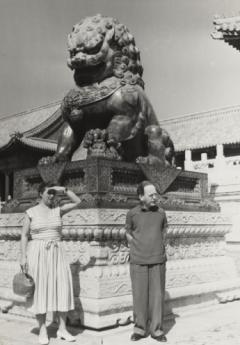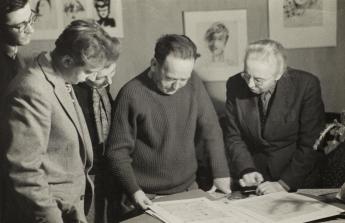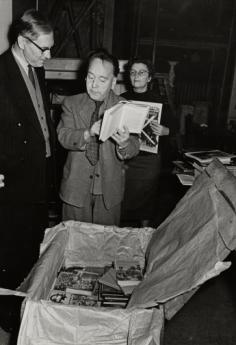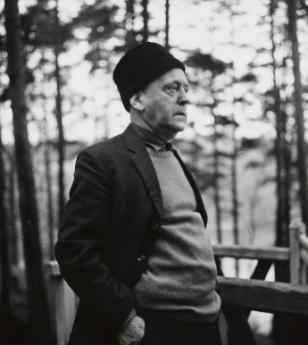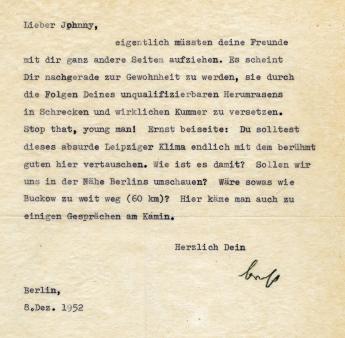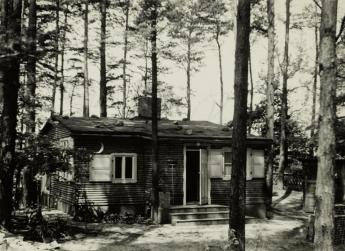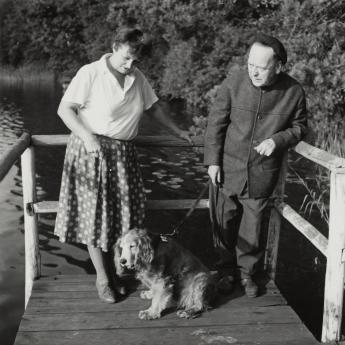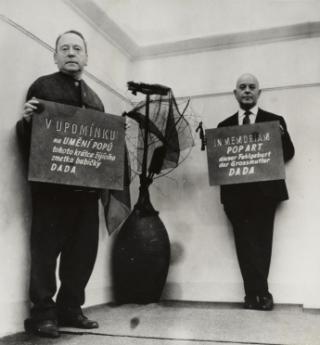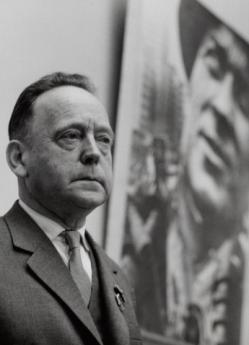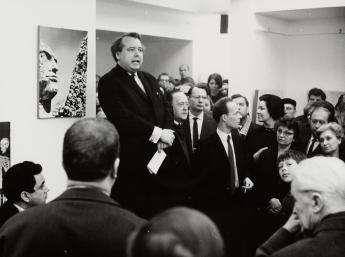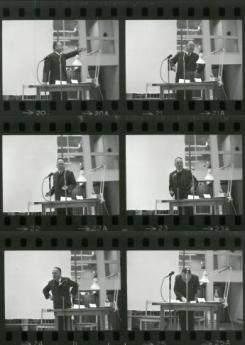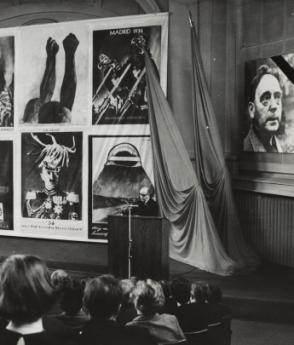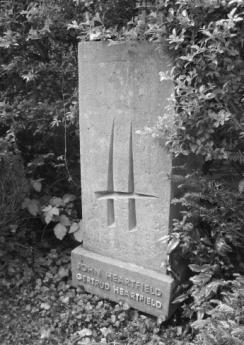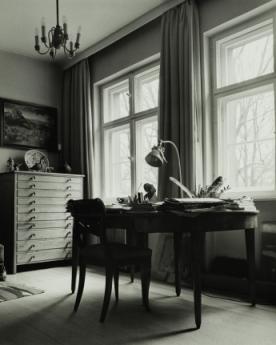1891
19 June Hellmuth Franz Joseph Stolzenberg (birth name) is born in Schmargendorf near Berlin
1893
Birth of sister Hertha
1895
The family moves to Munich. The father, Franz Herzfeld, is sentenced to prison due to "blasphemy" and flees with his family to Weggis, Switzerland
1896
The parents marry
Birth of brother Wieland
As „destitute foreigners“ the family are not granted permission to stay in Switzerland and move to Aigen near Salzburg, Austria
1898
Birth of sister Charlotte, called Lotte
"I was born on 19 June 1891 in Schmargendorf near Berlin. My father Franz Herzfeld was a poet and a socialist born in Düsseldorf. My mother was born in Berlin. She was a textile worker until she married, and after that a housewife. She was also a socialist."
John Heartfield, Curriculum vitae, 1950, JHA 666.13
1899
The parents disappear under unknown circumstances and abandon their children. A year later Helene Stolzenberg, an aunt who lives in Wiesbaden, is appointed legal custodian for the Herzfeld children
Hellmuth Herzfeld attends elementary school; having allegedly been involved in a "students' revolt", he is sent to the reformatory Johannäum in Salzburg. He returns to live with the Varnschein family
1905
Apprenticeship as a book dealer in Wiesbaden. Painting lessons with Hermann Bouffier
"I lost my parents in 1899 and lived with various families as an orphan until 1905; in Salzburg, Austria with a country innkeeper [Ignaz Varnschein, Mayor of Aigen] and with a postman [Franz Bischof]. Then, at the age of fourteen, I came to Wiesbaden (1905) after I had finished primary school."
John Heartfield, Curriculum Vitae, 1951, JHA 666.12
"Dear Wieland, the house in the middle in front of the Gaisberg Mountain is my birthplace. Only ten days after I was born, Mama moved to the corner house on Aignerallee with us. So said Uncle Ignaz, you can no longer remember that of course, […]."
Charlotte Herzfeld on a postcard to Wieland Herzfelde, ca. 1960s, WHA 3433
1907
Heartfield paints The Hut in the Forest for his sister Hertha
1908
He takes up studies at the Royal School of Applied Arts in Munich
1912
Work as a graphic designer for advertisement with the printing firm Gebrüder Bauer, Mannheim
Heartfield's first book design for Ausgewählte Werke, a book by his father Franz Held is published
Participation in various poster competitions
1913
Heartfield studies at the Kunst- und Handwerkerschule Berlin-Charlottenburg, (his professors include Ernst Neumann)
He wins first price for a mural he designs for the Werkbund exhibition in Cologne
"In Wiesbaden, I became an apprentice at a book shop that belonged to the husband [Heinrich Heuss] of one of my mother's sisters, but I didn't stay there for long, but instead wanted to be an artist and took lessons with a painter [Hermann Bouffier]. […] In 1908, I went to Munich to attend Munich College of Applied Arts. I earned my fees through my own craftwork. […] But I wanted to be a freelance artist and moved to Berlin a year later [1913] to attend Charlottenburg College of Applied Arts and Crafts, where I continued my studies until the outbreak of the First World War. At that time, I was in receipt of a scholarship from the City of Berlin Charlottenburg."
John Heartfield, Curriculum vitae, 1951, JHA 666.12
1914
Military service at the infantry regiment N°2 of the Kaiser-Franz-Garde in Berlin
1915
Release from military service, allegedly due to a simulated mental condition. Heartfield destroys his early art works, mostly landscape paintings
1916
Hellmuth Herzfeld takes on the name John Heartfield in order to protest against the anti-British hate campaign
1917/1918
Heartfield creates his first photomontage So sieht der Heldentod aus!
"I was drafted as early as September 1914 and [...] joined the guard. I joined the Kaiser Franz Josef regiment in Neukölln. [...] I was never allowed to leave the Kaiser Franz Josef barracks. And when we marched to Hallesches Tor and we ordinary people could be seen, the people shouted at us: 'Ah, Germany's last resort' and we replied: 'Germany's very last'. [...] At Christmas, it was in 1914 – at that time we had been promised that the war would be long over – we were ordered to go to the post office in Grunewald. We were to play at being postmen and to deliver the 'Lokalanzeiger', this odious, warmongering newspaper, to the petit bourgeoisie of the district of Grunewald along with their letters. Do you know what I did? I went to the nearest gully and threw the letters and all into the gully. [...] But it was not just productive irascibility that led me to a very decisive action, for example, to translate my name into English. This was my response to Ernst Lissauer's song of hate, 'Gott strafe England' (God punish England)."
John Heartfield, Radio interview, 1966
"I had become a soldier very early on. Then we glued, I glued and quickly cut out photos and then another under that again. Of course, this again provided a counterpoint, a contradiction, and it said something different. That was the idea. It was not very clear to me yet where that was leading and that, for me, it would lead to photomontage."
John Heartfield in converstation with Bengt Dahlbäck at Moderna Museet, Stockholm 1967, quoted from: Peter Pachnicke, Klaus Honnef, John Heartfield. Cologne, 1991, p. 14
1917
Foundation of the Malik Publishing House in Berlin, which will go on to publish more than 350 books until 1933. Wieland Herzfelde is the editor; John Heartfield and George Grosz are responsible for the publishing house's artistic profile. They design the iconic book covers, advertising materials and all other Malik products
1924
Heartfield creates his first photomontage as a critical comment on recent history. On the 10th anniversary of the beginning of the First World War Ten years later: Fathers and Sons 1924 is publicly displayed in the Malik shopwindow, drawing huge crowds and triggering heated debates
Heartfield designs the books of many prominent Malik authors, such as Franz Jung, Erich Mühsam and Upton Sinclair
„[…] However, that was by no means our only way to protest against war. With my support my brother Wieland had founded the 'Neue Jugend' Publishing house. The first issue we printed was number 7. [...] I had already started working with photography in this large scale publication." […]“
John Heartfield, Radio interview, 1966
"If I weren't Peter Panter, I would like to be a book cover at the Malik Verlag publishing house. This John Heartfield is really a small wonder of the world. What great ideas he has! What lovely things he makes! I had one of his photomontages framed, and one would love to keep almost all of them."
Peter Panter (Kurt Tucholsky), Auf dem Nachttisch. In: Die Weltbühne, (2.2.1932) Nr. 5, S. 177
1917
Thanks to a recommendation from Harry Graf Kessler Heartfield is employed as a trickfilm maker at the „Militärische Bildstelle“, later known as UFA (department of film animation)
Marriage with Helene Balzar
1918
Birth of son Tom
1919
Together with his brother Wieland Herzfelde, George Grosz and Erwin Piscator Heartfield joins the Communist Party of Germany (KPD)
"In the last year of the war from 1917 to 1918, I worked as a film set designer at the Grünbaum film studio in Weissensee; after the war had ended – from 1918 to 1920 – as a director at the UFA culture department. In addition, I set up the animation department at UFA. When the KPD was founded on 31 December 1918, I joined the party. I made posters for party meetings, for demonstrations and elections, for the party's agitprop, designed the emblem [motif] (a clenched fist in a circle) of the Roter Frontkämpferbund (Alliance of Red Front Fighters), etc. and took care of the printing of illustrated party election sheets, leaflets and magazines. As a member of the Rote Künstlergruppe Berlin (red artists group), I edited the party's satirical comic paper, 'Der Rote Knüppel'".
John Heartfield, Curriculum vitae, 1951, JHA 666.12
1919
Heartfield, who calls himself "Monteur-Dada", takes to the stage together with Johannes Baader, George Grosz, Raoul Hausmann and Richard Huelsenbeck
1920
Stage designs for Erwin Piscator's „Proletarian Theatre”
Birth of daughter Eva
Heartfield meets Otto Dix and Otto Griebel
Heartfield participates in the 'First International Dada Fair'; together with George Grosz he creates Dada siegt. Eine Bilanz des Dadaismus, the cover image for the advertising broadsheet
„That's when we became Dadaist. Naturally this was triggered by a - let's call it - nihilistic stance of us artists. It coundn't have been any different because the large part of us came from a bourgeios background with no connection to the working class […]. We started out debating a lot, premarily among each other, also in an dadaist fashion. But we also argued with the visitors of our Dada matinées and other performances. [...] The Dadaists had such an extreme reaction to the barbarity in which Germany was immersed due to the war. [...] We wholeheartedly believed that the dadaistic man was and had to be a radical opponent to exploitation. And this we have always projected. Also in a large exhibition which we called ‚Erste große dadaistische Messe‘ [First International Dada Fair] and which we organized at Dr. Otto Burchard's in Berlin.“
John Heartfield, Radio interview, 1966
1921
Heartfield designs books for various publishing houses and takes commissions from theatres. He creates photomontages which comment on current events and debates, such as Hurra! Der Panzerkreuzer A ist da! and is responsible for the design of various KPD-publications
1927
Marriage with Barbara Friedmann
Heartfield meets Hanns Eisler und Ernst Busch
1928
Involved in a car crash in Berlin, Heartfield suffers from concussion
1929
At the International Exhibition of the German Werkbund, 'Film und Foto', Stuttgart, a whole room is dedicated to Heartfield's work
Publication of Kurt Tucholsky's Deutschland, Deutschland über alles with photomontages by John Heartfield
"Our friend John Heartfield also filled a room with the best of his photomontages. His works are imbued with the revolutionary idea, he knows like no other how to use photography as a weapon."
In: Der Arbeiter-Fotograf (Berlin), Year III (1929), No. 8, p. 156
„Once he had used a giant, reached out hand as an image for an election poster, as always accompanied by a grabbing text ["The hand has five fingers - with '5' you will beat the enemy - vote list 5"] . In the following days he received fantastic offers from three large industrial companies to become their head of advertising - some hinted that his political art would never make him a rich man and that the offered position would allow him to spend his sparetime making political art free from any financial worries. He declined these offers, he wanted to remain independent in his political and ideological battles and encourage others to join in.“
Hellmuth Bachmann [presumably Barbara Herzfeld]‚ John Heartfield: Zu seinem 50. Geburtstag am 19. Juni 1942. In: Argentinisches Tageblatt, Buenos Aires, 54 (19.6.1942), Nr. 167, S´p. 10
1919
Works for Max Reinhardt's cabaret Schall und Rauch
1920
Leading stage designer at Reinhardt-Bühnen; works include stage sets for Caesar and Cleopatra by George Bernard Shaw, Woyzeck by Georg Büchner und The Weavers by Gerhart Hauptmann
Collaborations with Erwin Piscator and George Grosz
Productions of „Proletarian Theatre“, e. g. Rußland's Tag (A Day in Russia)
Heartfield works in many capacities for various theatres and produces stage and costume designs, projections, posters and printed materials
1929
Collaboration with László Moholy-Nagy for Walter Mehring's Der Kaufmann von Berlin (The Merchant of Berlin) (Piscator-Bühne at Nollendorfplatz)
1931
Stage design for Tai Yang erwacht (Tai Yang awakes) by Friedrich Wolf at Junge Volksbühne/Wallner-Theater, Berlin
"From 1920 to 1922, I was the artistic director of the set design department for Deutsches Theater, Kammerspiele and Großes Schauspielhaus, Berlin. Among other things, I designed the decorations and costumes for Büchner's 'Woyzeck ' (directed by Max Reinhardt), […] Ernst Toller's 'Maschinenstürmer' at the Großes Schauspielhaus theatre (directed by Karl Heinz Martin). In the years that followed, I created a series of sets for Piscatorbühne, among others for Gorky's 'Die Feinde' (Enemies) and 'Nachtasyl' (The Lower Depths), Friedrich Wolf's 'Tai Yang erwacht' at Wallner Theater, and for Berthold Viertel's theatre ensemble 'Die Truppe' Georg Kaiser's 'Nebeneinander' (Side by Side). During the Weimar Republic, I often appeared as a speaker at meetings. Once, I was charged with defamation of the Weimar Republic and ordered to pay a hefty fine."
John Heartfield, Curriculum vitae, 1951, JHA 666.12
"The performance at the Großes Schauspielhaus theatre of Trotz alledem’ (Despite everything) [.. .] Overall: The combination of film and theatre was fantastic. John Heartfield had a hand in the game. Here he is unsurpassable. He also got as much as possible out of the transformations on the stage. But the film was the 'main event'. It was the 'mood', this war film, the illustration, the immediate, everything that one cannot bring out dramatically on a revolving stage, the film was the fulmination, it stirred us to the core."
Otto Steinicke. In: Die Rote Fahne, Berlin, 13./14.7.1925, quote from: Günter Rühle, Theater für die Republik. Im Spiegel der Kritik, 1. Band. Berlin 1988, p. 648
1951
Stage design and poster for Bertolt Brecht's Die Mutter (The Mother) at Berliner Ensemble
Posters for productions such as Der Biberpelz (The Beaver Coat) and Der Rote Hahn (The Red Rooster) by Gerhart Hauptmann and Nikolaj Pogodin's Das Glockenspiel des Kreml (The Bells) at Berliner Ensemble
1954
Stage design for Mutter Riba (Mother Riba) by David Berg (Kammerspiele, Berlin)
1955
Stage designs, costumes and poster for Sozialaristokraten (Social aristocrats) by Arno Holz (Kammerspiele, Berlin)
1966
Poster for Rolf Hochhuths Der Stellvertreter (The Representative) (Deutsches Theater, Berlin)
1931
From April 1931 to January 1932 Heartfield travels the Soviet Union. He exhibits about 300 of his own works in Moscow, holds lectures and gives courses on photomontage at the Institute of Polygraphy. He meets Lilja Brik und Alexandr Rodchenko and is involved in the design of two editions of the magazine USSR in Construction
He spends some weeks with journalists and photographers in the oil belt of Baku. In Odessa he meets up with Erwin Piscator and works on the stage sets for Der Aufstand der Fischer von St. Barbara (The Revolt of the Fishermen), an adaption of the novel by Anna Seghers
"In 1930, I was invited to the Soviet Union and remained there for a year. First I organised an exhibition of my work in Moscow [1931], then the publisher of the magazine USSR in Construction sent me, along with a shock brigade of soviet master photographers, to the Caucasus, Baku, Batumi and Odessa. In Odessa, I was involved in building the external buildings for the Piscator film The Revolt of the Fishermen by Anna Seghers."
John Heartfield, Curriculum vitae, 1951, JHA 666.12
1933
Easter: The SA forcefully enter Heartfield's flat. He flees across the Krkonose Mountains to Prague
Commences with work for the exiled AIZ with the photomontage Hitlers Programme and the Malik Publishing House
1934
An announcement in the Deutscher Reichsanzeiger publicly proclaims the expatriation of John Heartfield, Wieland Herzfelde, Erwin Piscator, Leonhard Frank, Alfred Kantorowicz, Klaus Mann (among others)
"Notification. On the grounds of Section 2 of the Law on the Revocation of Naturalisations and the Withdrawal of German Nationality of 11 July 1933, I hereby declare, in agreement with the Reich Minister of Foreign Affairs, that the following members of the Reich have forfeited their German citizenship through behaviour that, contrary to the obligation of fidelity to the Reich and the nation, has damaged German interests. […]
Herzfeld, Helmuth (John Heartfield), born on 19 June 1891;
Herzfelde, Wieland, born on 11 April 1896; […]
Berlin, 01 November 1934
Reich and Prussian Minister of the Interior. Dr Frick."
„During the first three months of 1933, in preparation to the General election on 5 March 1933, I worked illegally for Peuwag [Papier-Erzeugungs- und Verwertungs-AG] and produced some printed materials for the party and a large poster which I had designed myself and supervised the print production. On Good Friday, Easter 1933, the SS [SA] broke into my flat at night and by coincidence I was there, packing up my artwork. Jumping from the balcony of my raised ground-floor flat I managed to resist Arrest. The Party ordered me to emigrate by foot on Easter, crossing the Krkonose mountains to enter the ČSR. In the beginning of November 1934 I was expatriated by the Hitler regime.
John Heartfield, Lebenslauf, 1951, JHA 666.12
1934
Heartfield's participation in the International Exhibition of Caricatures at the Mánes Art Society in Prague leads to a diplomatic crisis between Germany and Czechoslovakia
1936/1937
Heartfield contributes works to the International Photo Exhibition at Mánes Art Society and to 50 Years of Mánes; due to the threat from Germany to discontinue diplomatic relationships with Czechoslovakia, some of his works have to be taken down. Heartfield reacts with the publication of the photomontage Comment on the Intervenience of the Third Reich - The more works they put down, the more visible reality becomes! (Zur Intervention des Dritten Reiches – Je mehr Bilder sie weghängen, um so sichtbarer wird die Wirklichkeit!)
"From the very first day I arrived in Prague, I was a regular contributor to Volks-Illustrierte, where my satirical photomontages against the Hitler system were published every week. I designed book covers for Malik Verlag, which my brother had continued to run in Prague, as well as for Czech publishers. I was a member of the Prague party group and the Bert Brecht Club. In the spring of 1934, Mánes Art Association of Prague also showed some of my works in an exhibition of cartoons, which led to Hitler's government making an official complaint to the Czech government."
John Heartfield, Curriculum vitae, 1951, JHA 666.12
1935
Heartfield shows "150 photomontages“ at the Maison de la Culture in Paris. The exhibition is organized by the Association des Écrivains et Artistes Révolutionnaires
He participated in the First International Writers' congress for the Defense of Culture and meets international artists and writers, such as Walter Benjamin
He designs book covers for Willi Münzenberg's Editions du Carrefour, among them the photomontage The brown Network. How Hitler's Agents are working abroad and preparing War (Das braune Netz. Wie Hitlers Agenten im Auslande arbeiten und den Krieg vorbereiten)
"At the instigation of Louis Aragon, Henry Barbusse and Romain Rolland, in the autumn of 1934 [April/May 1935], there was an exhibition of my work in Paris. I stayed there for half a year."
John Heartfield, Lebenslauf, 1951, JHA 666.12
1938
Due to the imminent occupation of Czechoslovakia by the German Wehrmacht, Heartfield has to flee the country in December. The last photomontage he creates in Prague is The most gigantic Liar of all times (Das gigantischste Lügenmaul aller Zeiten). It was published in the Volks-Illustrierte magazine, but censored
The journalists Martha Gellhorn, wife of Ernest Hemingway and Eric Gedye support Heartfield's emigration to England. On 31st October 1938 his passport is issued by the Czech authorities. On 6 December, Heartfield boards a plane from Prague to Strasbourg, the following day he arrives in Croydon. His first preliminary residence authorization allows him to stay for two months. He initially stays with Yvonne Kapp, then with the painter Fred Uhlman in North London
Separation from his brother who is not granted permission to remain in England
"On 06 December 1938, I was evacuated by plane to London by our party's aid organisation in Prague; in London I received support from the Czech Trust Fund Committee (Thomas Mann Group). At the request of the London German party group, Comrade [Wilhelm] Koenen organised lodgings for me with the German painter Fred Uhlmann, who was married to an English woman, at 47 Downshire Hill, London NW3.“
John Heartfield, Lebenslauf, 1950, JHA 666.13
1938
About fifty emigrés from Germany and Austria gather at the London home of the lawyer and painter Fred Uhlman and decide on the foundation of the Freier Deutscher Kulturbund in Großbritannien (Free German League of Culture in Great Britain [FGLC])
1939
Heartfield is an active member of the FGLC. A selection of his work is shown at the Arcade Gallery on London under the title One Man’s War against Hitler and aegis of the FGLC. He creates the photomontage for the book Freedom Calling! The Story of the Secret German Radio
1940
Internment as "enemy alien“ at three different camps. Severe illness; Heartfield is supported and cared for by his partner, Gertrud ("Tutti") Fietz
1941
To celebrate Heartfield's 50th birthday, the FGLC are putting on an exhibition of his works
1942
Heartfield contributes to the Allies Inside Germany exhibition, for which he creates works such as Five to twelve (Fünf Minuten vor zwölf)
1943
Heartfield works as a book designer for Lindsay Drummond publishing house; he creates the photomontage for ...And yet, it moves! (Und sie bewegt sich doch!), a publication dedicated to critical German poetry with a foreword by Oskar Kokoschka
1950
Works as a cartoonist and typographer for Penguin Books
"The Kulturbund soon managed to obtain a private house at Upper Park Road, Hampstead, London NW3. For two years, until I was interned in England [July-August 1940], I did unpaid work for the Kulturbund every day. […] As I was a member of the party for as long as the KPD (Communist Party of Germany) existed in England, I helped to implement the party resolutions within the Kulturbund. I made sets for various performances on the stage at the Kulturbund house, organised various artistic events and lecture evenings, and gave a series of lectures myself at the Deutsche Hochschule. I designed the covers for a series of political writings published in London by the Russian magazine 'Soviet War News' … I was interned [in] England during the War, but was released after seven weeks for health reasons (headaches). Soon after my release from internment, at the end of August 1940, I found a job as a book manufacturer at the London publishing house Lindsay Drummond Ltd., which I held until the end of January 1950 [initially as a freelancer and then as a permanent employee from 1942]. In mid-March 1950, I worked in the book manufacturing department of Penguin Books Ltd. London"
John Heartfield, Curriculum vitae, 1950, JHA 666.13
1950
The political "Cold War", especially the GDR government's suspiciousness against "late-returning" émigres from Western states, is making Heartfield's attempts to return to Germany increasingly difficult
With the help of his brother, who had returned to the GDR from the USA, Heartfield manages to remigrate via Prague to Leipzig on 31st August
1952
Third marriage to Gertrud ("Tutti") Fietz
"In 1945 my partner and I would have gladly returned to Germany, but my physician, Dr. Otto Manasse, a sympathiser and member of the Kulturbund, declared me unfit to travel and also informed the party leadership of this. […] I felt […] I was therefore in a position, at the end of 1949, to respond to an invitation to return to Germany in the affirmative. The steps subsequently taken took more than eight months."
John Heartfield, Curriculum vitae, 1950, JHA 666.13
"At the end of August [1950], I left England and returned to Germany with my wife and have lived in the GDR since then."
John Heartfield, Curriculum vitae, 1956, JHA 666.9
"I work as a freelance artist. I work with my brother, Professor Wieland Herzfelde. My printed works and montages are now always signed 'Heartfield Herzfelde'."
John Heartfield, Curriculum vitae, 1951, JHA 666.12
1951
The couple lives in Leipzig and Heartfields maintains a studio space for working in Berlin
The SED's central party control commission suspects all "West emigrants" of maintaining "treasonous connections" to Western intelligence Services. Due to their alleged affilations to the circle of Noel Field, Heartfield and his wife are denied party membership
Heartfield is not invited to join the Akademie der Künste (GDR) as a member
He suffers a first heart attack
He creates the photomontage Only the most stupid cows voluntarily go to the butcher's (Nur die allergrößten Rinder kommen freiwillig zum Schinder)
„[...] When we returned to the GDR and the brothers tried to cooperate as artists, it just wasn't possible. Years of emigration with very different experiences in different countries had turned them into very different people. [...] Johnny was very unhappy about this, in despair, but he couldn't change it, he himself had changed. He often kept the projects he worked on or was thinking about secret, just to avoid being patronized. [...]. And then, there were his illnesses, his two heart attacks and the many stays in hospital. [...]. But finally, with the support of his friends [Bertolt] Brecht, [Bodo] Uhse and [Stephan] Hermilin, who had fought a long battle, he was elected to the Akademie [1956]. From then on John had his life back. He started having exhibitions [...].“
Gertrud Heartfield in a letter to the director of the Akademie der Künste der DDR, Berlin, 1972
1956
John Heartfield is rehabilitated by the SED's Central Party Commission
Appointed as honorary member of the GDR artists' society (Verband Bildender Künstler der DDR)
Elected member of the Deutsche Akademie der Künste
1957
First large retrospective John Heartfield and the Art of Photomontage, Berlin and other cities (John Heartfield und die Kunst der Fotomontage). Numerous awards and prices and distinctions, including the National Price for Art and Literature (2nd class)
Move to Berlin
„Tell me, might you perhaps know what became of John Heartfield?" This sentence, which reads like the opening line of a detective story, was actually a valid question. It seems almost like one of the greatest and most original artist of our times had disappeared without a trace - disappeared among us, in the GDR! [...]
I believe that Heartfield, in accordance with the greatness of his art, belongs in the Akademie [...]“Stefan Heym, Offen Gesagt. In: Berliner Zeitung, 10 (13.6.1954), 135, p. 2
"John Heartfield is one of the most important European artists. He works in a field he created himself, photomontage. Through this new artistic medium, he criticizes society […]. The prints by this great satirist […] are considered by many, including the writer of these lines, to be classics."
Bertolt Brecht 1951 In: Werke. Große kommentierte Berliner und Frankfurter Ausgabe. Hg. v. Werner Hecht [u. a.]. Band 23. Berlin und Weimar, Frankfurt am Main 1993, p. 154
1957
Heartfield embarks on a three-months study trip to the People's Republic of China. He is accompanied by his wife Gertrud and the [Akademie's] master students Werner Stötzer and Harald Metzkes
On the way home the group are spending two weeks in Moscow where they are meeting friends and acquaintances. A large part of the works Heartfield had exhibited in 1931 are being returned to him at the Pushkin Museum
"A lucky decision by the members of the Visual Arts Department at the GDR Akademie der Künste put together a delegation to the People's Republic of China in 1957: John Heartfield, his wife Gertrud, Werner Stötzer and Harald Metzkes. We stand in the wake of the man who created the montage China der Riese erwacht – Wehe dem Eindringling! (China the Giant awakes – Woe to the Intruder!) – very well-known and often embraced there – at his side, half a step behind him. […] In a monastery courtyard, three men stood next to each other drawing. Each looked intermittently at what the other had done. Heartfield drew with charcoal on a handmade piece of laid paper. A demon filled the countless indentations left behind by the grid when the sheet from England was being made. Where did this creation that amassed more black with every stroke of the hand end up? Asked to help Gertrud Heartfield to sort the large stack of paper, I did not come across it. Some of the excellent sheets of paper ended up with me. […] And every time it is also a reminder of a friendly, collegial three months under foreign skies in the best of company."
Harald Metzkes, Zwei Papiere, In: Werner Stötzer. Berlin 2016, pp. 33–36 (akademiefenster 11)
1953
Bertolt Brecht invites Heartfield to Buckow [Märkische Schweiz, a Region East of Berlin]
1955
Heartfield returns to the region
1957
Heartfield acquires the right to use a plot of land at the Großer Däbersee in Waldsieversdorf; recycling some parts from former barracs used by the Wehrmacht, he designs and erects a summer cottage
"Whenever and wherever one met him, he was almost always in a hurry, excited, pressed for time. Except for the summer days he spent at the forest cottage with his wife, where, in a way, he experienced a second, happier childhood among the trees, flowers and rare objects."
Wieland Herzfelde, John Heartfield. Leben und Werk dargestellt von seinem Bruder Wieland Herzfelde, Dresden 1976, p. 108
1964
Exhibitions in Warsaw Niestety actualne (Still topical, unfortunately) and at the National Gallery at Prague Stále iestje (Still)
1965
International exhibitions include Meg Mindig (Still) at the Ernst-Museum at Budapest and In Lotta contro lʼidra (in Battle against Hydra) at Galleria il fante di Spade in Rome
1966
Exhibitions in West Germany include Der Punkt aufs I (The dot on the i) at Europa-Center Berlin (West)
and at Städtische Bühnen Münster (Westfalia)
1967
Exhibitions include Wartet nur balde … (Just you wait) exhibition of the Club Voltaire at the Carmelite monastery, Frankfurt am Main
John Heartfield Fotomontör at Moderna Museet in Stockholm u.a.
"At this point in time, I find it very gratifying that my photomontages are now being shown in Stockholm and Lund. In the Nordic countries, they were often published by newspapers in Scandinavia, Denmark and the Netherlands at the time of their creation, before and during Hitler's regime. Since then, they have gained patina. But have they lost meaning because of this? Unfortunately not! That is why I called some of my exhibitions: 'Leider noch aktuell' (Still topical, unfortunately). As we live in the nuclear age, a third world war would mean disaster for the whole of humanity that we cannot sufficiently imagine in any way. Before the outbreak of the Second World War, on 13 October 1937, I created a photomontage titled 'Mahnung' ('Warning'). Cinema-goers see horrific scenes caused by a Japanese air raid on Manchuria in the Far East. The subtitle of the montage is: 'Today you see the war in other countries in the film. But know this: if you do not defend yourselves together, it will murder you tomorrow too!'"
John Heartfield, fotomontör. [Exhibition catalogue, Moderna Museet], Stockholm, 1967, p. 4
1968
Having suffered from influenza, John Heartfield dies on 26 April in Berlin. He is buried at Dorotheenstädtischen Friedhof in Berlin
Gertrud Heartfield administers Heartfield's bequest until she dies in 1983
According to their joint testament, the Akademie der Künste establish an archive comprising both their written documents and Heartfield's artistic works. As one of the most outstanding donations of German 20th century art and documents, these holdings are to this day in the care of the Akademie's Archive for visual art and the Art Collection.
„Hardly anybody these days could argue that Heartfield was no great artist – still I believe that only a few could say why that's what he was. That always was and still is a rather difficult task. It is interesting that John Heartfield dedicated all his talent, which was built on the great European tradition, to the service of daily politics. At a particular historic moment nothing was more important to him than socialism. After he realized this, it was easy for him - but difficult to follow through [...]. Judging from a distance Heartfield was seemingly a simple man. Looking closely, he was complex - or rather: A man with an enormous bandwidth. He was both, a wise man and a child. He was pedantic, but also a prolific artist. He loved and he hated [...] The world and our lives seem to be rather complicated. Heartfield made it more transparent. His brother helped him with this task. And his wife made it possible. [...]."
Werner Klemke, Funerary speech on 30 April 1968. In: Mitteilungen der Deutschen Akademie der Künste zu Berlin, 6 (1968), 4, p. 2–3


![Heartfield's father, Franz Herzfeld [pseudonym: Franz Held] (1862-1908), 1890. Photo: Akademie der Künste, Berlin, JHA 595/11.1.2.](/sites/default/files/styles/slider_element/public/images/page/02_01_Heartfield_0595_011_01_02_01_1.jpg?itok=goTRsWWa)

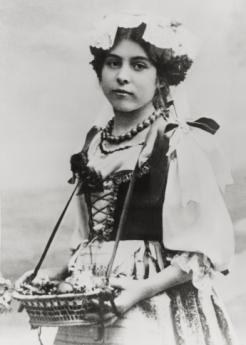
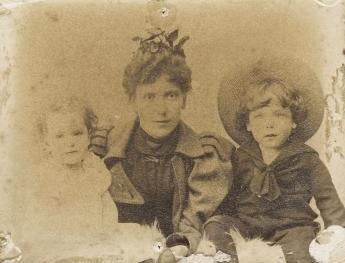

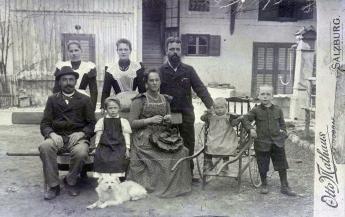
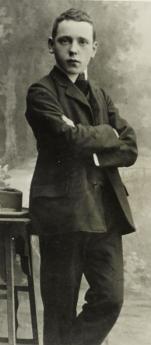
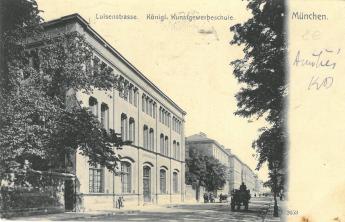
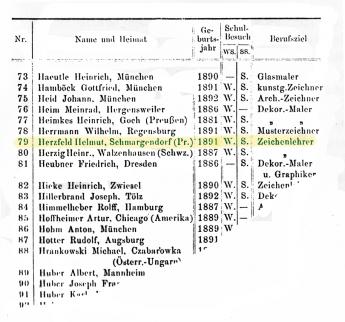
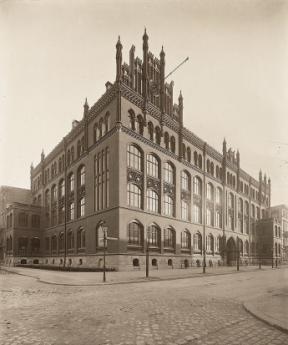


![Helene Balzar, Tom Herzfeld and John Heartfield: „Stilles Glück“ [Silent Bliss], Berlin, 1919. From: 'Der Dada-Almanach'. Berlin 1920, p. 136f. Akademie der Künste, Berlin, JHA 598/14.1.1.](/sites/default/files/styles/slider_element/public/images/page/07_01_Heartfield_0598_014_01_01_1.jpg?itok=F0epsBtP)
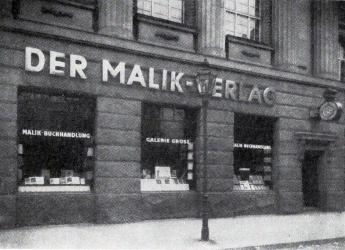
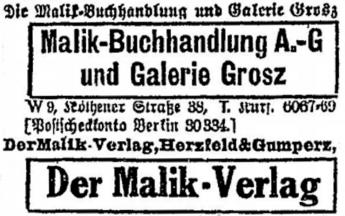
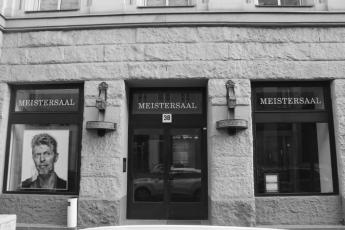
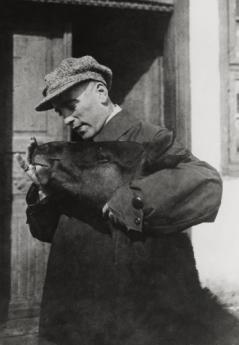
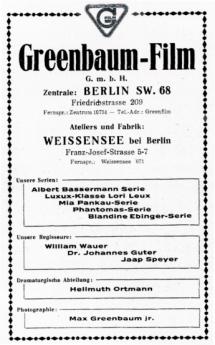
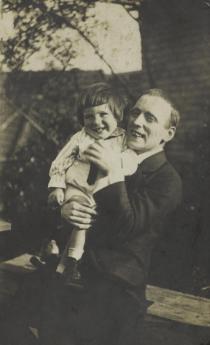
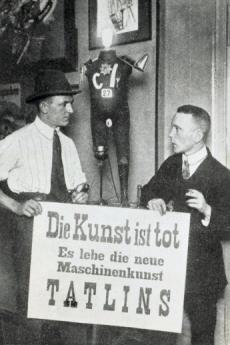
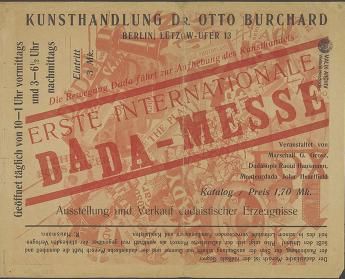

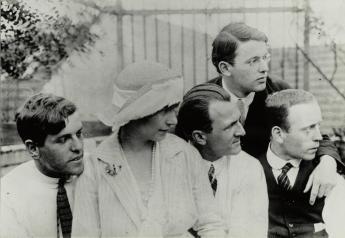
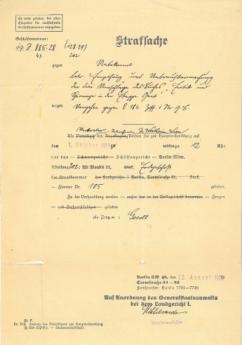
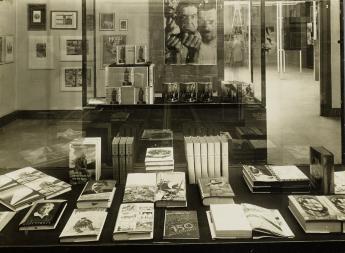
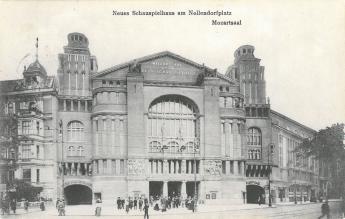

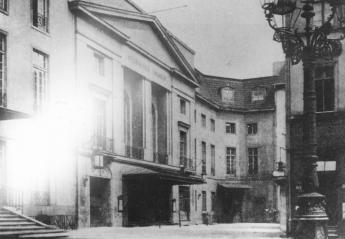

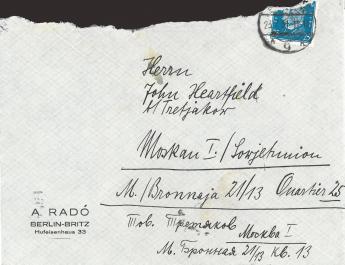

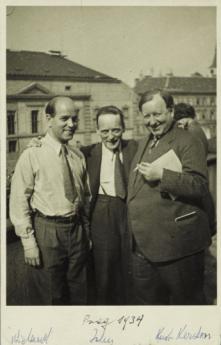
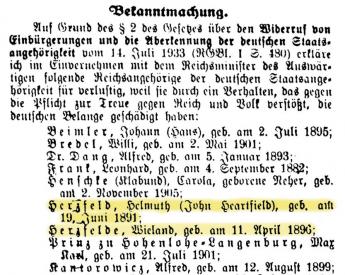
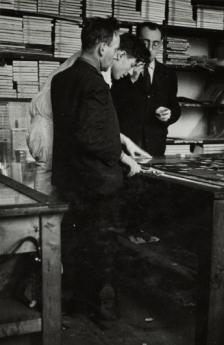
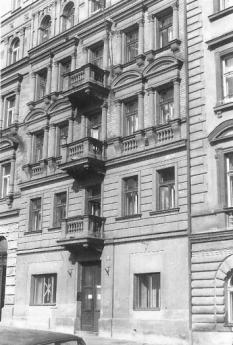
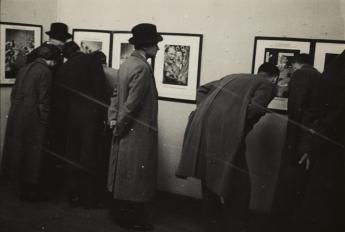
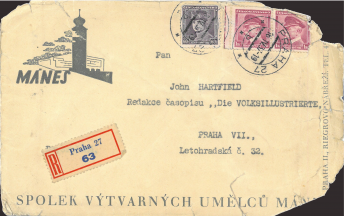


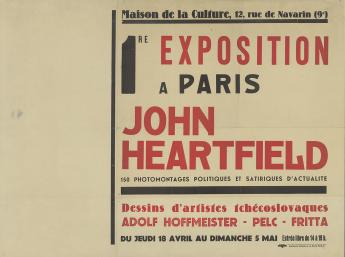
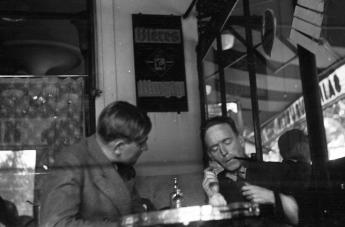
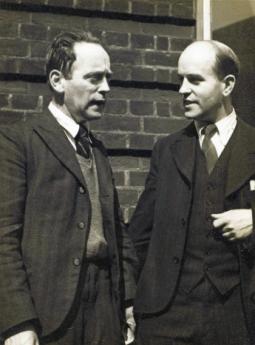
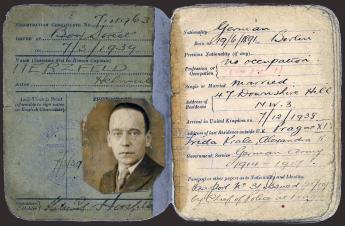
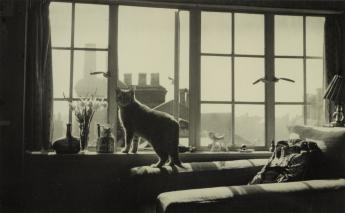
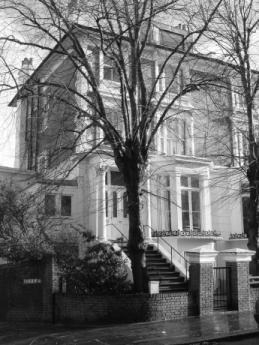
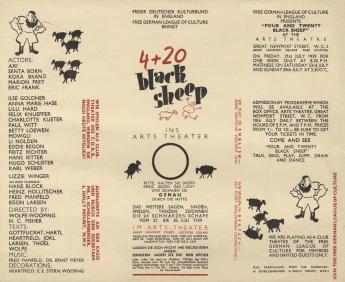
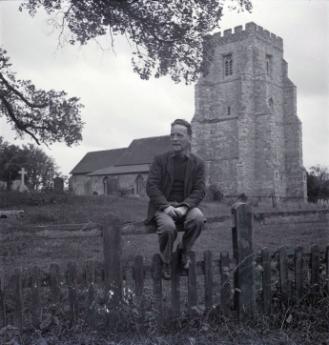

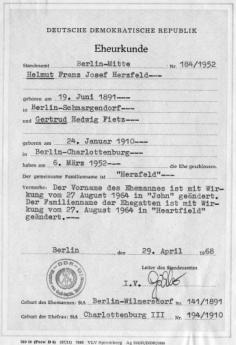
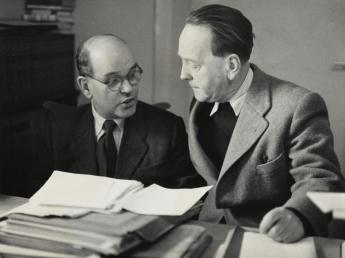
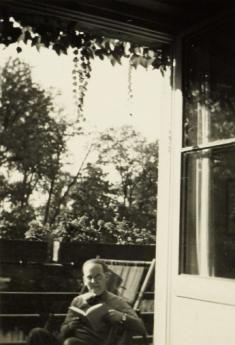

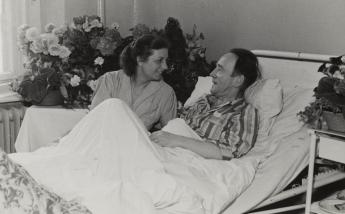

![Membership card of the Deutsche Akademie der Künste, Berlin (East) [recto / verso], 1957. Photo: Akademie der Künste, Berlin, JHA 666/3](/sites/default/files/styles/slider_element/public/images/page/20_02_Ausweis_Deutsche_Akademie_der_K%C3%BCnste_0.jpg?itok=gXCrE_Kk)
